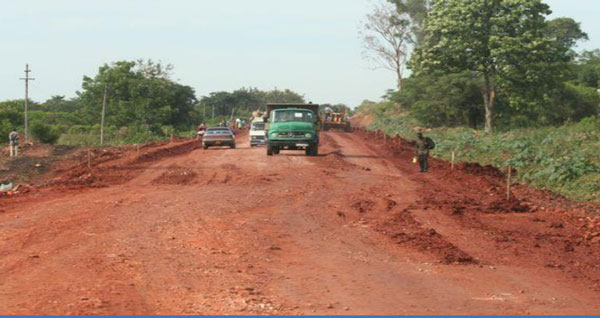
Kampala, Uganda | CSBAG | Every financial year, the government commits to upgrade a number of roads across the country, but many of these roads have remained unattended to despite budgetary allocations.
The government has on many occasions pledged to tarmac various roads across the country, but many of the roads, have not been worked on. One of the roads that has not been tarmacked is the Tirinyi –Pallisa-Kumi road, which President Museveni keeps on mentioning as one of the roads government is committed to upgrade.
According to some analysts some roads may have remained in poor state due to political reasons. During the Kyadondo bi-election campaigns, president Museveni blamed the poor service delivery in Kyadondo East to election of opposition leaders who he said cannot influence service delivery.
Acknowledging delays
In the current financial year 2017/18, the government committed to start construction works of the Muyembe-Nakapiripiriti road measuring about 92km, which has been pending for many years.
“This road has been lined up for upgrading this financial year, and 483 project affected persons will be compensated,” says Lillian Nakate, the Infrastructure Committee Chairperson and woman MP for Luwero district.
She urged the government to give priority to compensation of the project affected persons, which she said delays implementation of the construction works. Responding to claims of poltical maneuvering in road construction, Nakate says, “I don’t think this is true, because roads are constructed depending on revenue prospectus in a given area.”
She added that the government had concentrated on upgrading of roads connecting to the Ugandan borders to promote trade. She acknowledges government’s delays but says there is progress on some of the projects because feasibility studies have been conducted.
Uganda’s road network
According to the ministry of Works and Transport, 95% of cargo freight in Uganda, is moved by road. Uganda’s total road network, is estimated to be 129,469km long, of this, the community access roads constitute 50%, district roads 26%, urban roads 7% and national roads 17%.
The stock of paved road network in the country, increased by 19.7% from 4,364 to 5,224km between FY2010/11- 2014/15. National paved roads, increased by 21.7% in the last five financial years, from 3264.1, to 3981 km. 80% of the paved national road network was rated to be in fair to good, during the FY2014/1567%.
Updates on status of roads
For oversight, Nakate noted that the committee would visit various infrastructural projects across the country to ensure value for money. committee has on September 13, summoned the works and transport ministry to update parliament on the status of various roads which have been pending construction and upgrading over the years. The committee also expects the ministry, to update parliament on the progress regarding the construction of the standard gauge railway.
“The committee is moving out to check on some of these projects which have been pending for a long time. We want to ensure that they are finished on time so that our road network is improved, to facilitate agriculture,” Nakate said.
Sector allocation
The Shs 29 trillion FY 2017/18 budget allocated the lion’s share to the Works and Transport Ministry which took up Shs 4.5 trillion (20 percent) of the budget with Shs 3.4 trillion allocated to the Uganda National Roads Authority(UNRA) to handle national road works.
The NRM 2016 – 2021 manifesto states: “The NRM Government recognizes that reliable transport infrastructure, including roads, railways, air and water transport, is very crucial for a landlocked country like Uganda. It is a prerequisite for opening up production zones to markets. Transport is one of the key cost pushers for producers and manufacturers. The cost of transport adds 25 percent to the cost of goods while electricity at current prices adds 14 percent”.#
Source: CSBAG newsletter
 The Independent Uganda: You get the Truth we Pay the Price
The Independent Uganda: You get the Truth we Pay the Price



